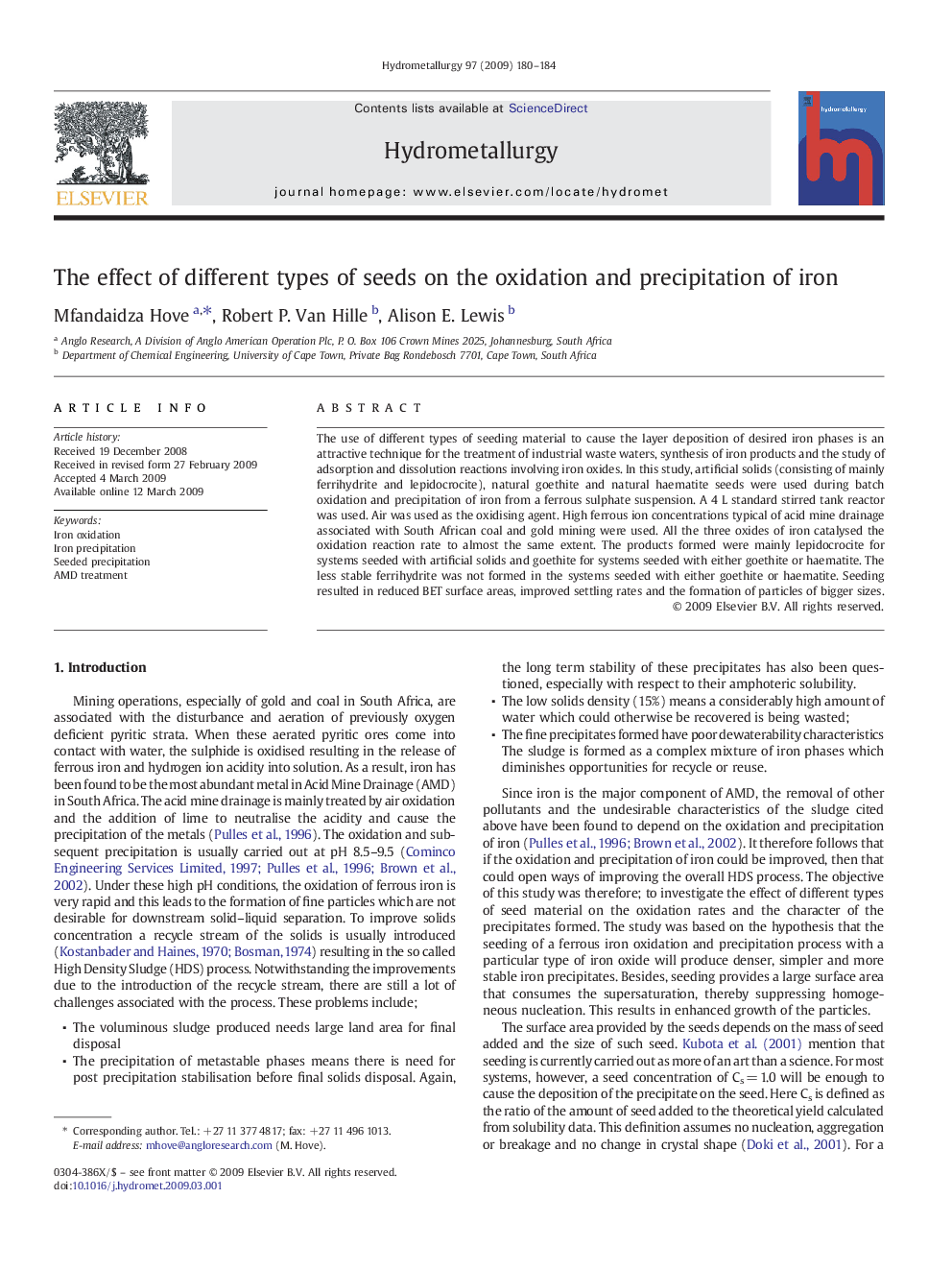| Article ID | Journal | Published Year | Pages | File Type |
|---|---|---|---|---|
| 212958 | Hydrometallurgy | 2009 | 5 Pages |
The use of different types of seeding material to cause the layer deposition of desired iron phases is an attractive technique for the treatment of industrial waste waters, synthesis of iron products and the study of adsorption and dissolution reactions involving iron oxides. In this study, artificial solids (consisting of mainly ferrihydrite and lepidocrocite), natural goethite and natural haematite seeds were used during batch oxidation and precipitation of iron from a ferrous sulphate suspension. A 4 L standard stirred tank reactor was used. Air was used as the oxidising agent. High ferrous ion concentrations typical of acid mine drainage associated with South African coal and gold mining were used. All the three oxides of iron catalysed the oxidation reaction rate to almost the same extent. The products formed were mainly lepidocrocite for systems seeded with artificial solids and goethite for systems seeded with either goethite or haematite. The less stable ferrihydrite was not formed in the systems seeded with either goethite or haematite. Seeding resulted in reduced BET surface areas, improved settling rates and the formation of particles of bigger sizes.
